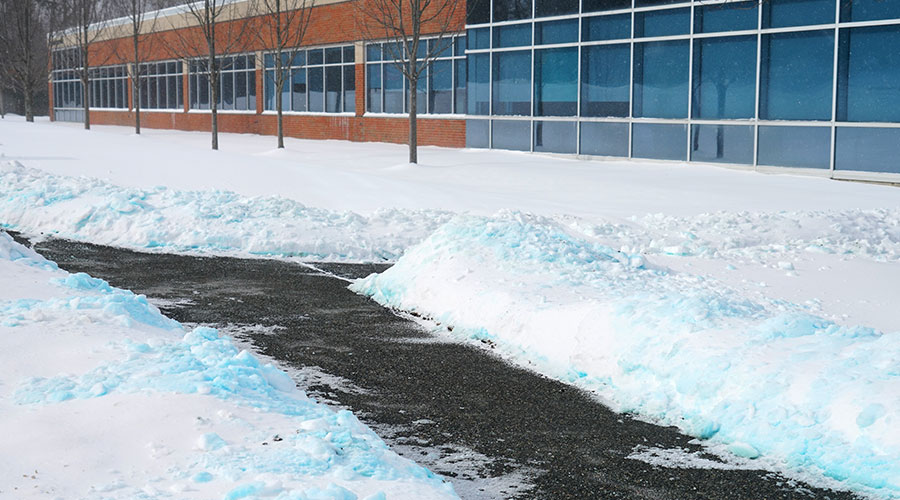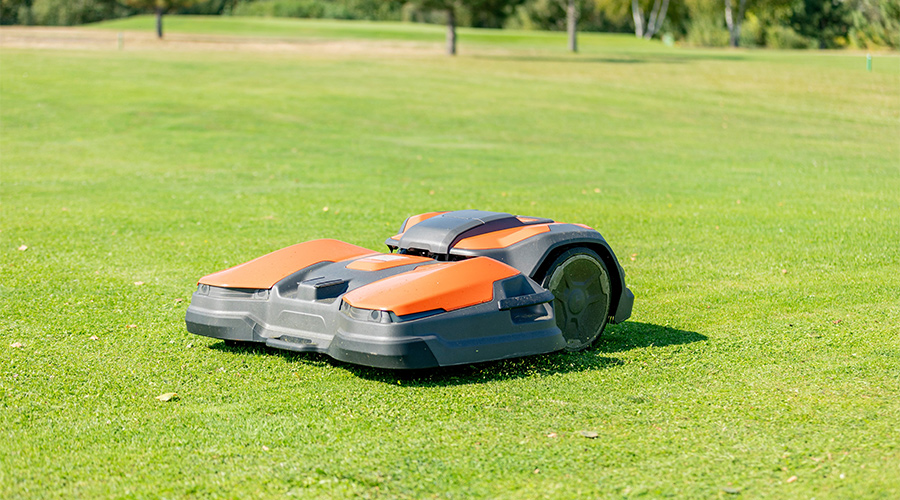Spring into Grounds Care
Departments’ preparation for warmer weather centers on ensuring mowers and other key pieces of equipment are ready for the challenge
The days already are getting longer, and the weather soon will get warmer. Before long, grounds-care operations will be in full swing. Will crews and equipment be ready? For most operations, it is almost never too soon to begin preparations for the upcoming spring.
Comprehensive preparation for spring activities includes attention to key pieces of equipment that form the core of grounds-care operations.
Inventory Insights
The first step to prepare for spring is to complete an equipment inventory. Managers should list every piece of equipment, including mowers, tractors, line trimmers, backpack blowers, and hand tools, such as pruners, spades, rakes and brooms.
Next, analyze the overall condition of all pieces of equipment and sort them into three categories:
-
needs replacement
-
might need replacement
-
good for another year.
Completing this process will provide managers with good guidelines for undertaking the ensuing activities, including purchasing, carrying out major equipment repairs, and scheduling maintenance.
Planning for Purchasing
Once the record of equipment that must be replaced is in hand, managers can add other required equipment and tools to the list. Ask staff members for a wish list of tools and equipment they believe would make them more productive.
Purchasing should begin early in the off-season, as it can take time to research and shop for the best values. Also, depending on the piece of equipment, it might take several weeks for delivery after the order has been placed.
Delegate one or more staff members to research equipment and develop a cost projection for all new purchases. Be sure to keep necessities and wish-list items separate, just in case the total cost exceeds budget and something needs to be cut.
Researching new tools and equipment can be time consuming but rewarding. Winter and early-spring trade shows throughout the country offer opportunities to view equipment displays and talk directly with manufacturer representatives. Many times, they also offer special show pricing.
For a listing of trade shows, contact the Associated Landscape Contractors of America at (800) 395-ALCA or visit www.alca.org. The Professional Grounds Management Society — (800) 609-PGMS or www.pgms.org — also might provide a listing of local trade shows.
Researching on the Internet also can be very productive. Most manufacturers have a detailed Web site that shows product details, photos and equipment dealers. Equipment and landscape forums on the Internet also allow grounds-care managers to ask questions and post their experiences and tips regarding the purchase and use of specific equipment.
Managers also should take time to network with peers and landscape contractors for opinions and advice. Local equipment dealers also can be invaluable resources for information in making equipment purchases.
Making a decision to repair or replace equipment is not easy.
During the winter months, experienced mechanics first should check out equipment that is in questionable condition. Each piece should be thoroughly inspected and maintenance records and receipts reviewed.
Before any major repairs or maintenance are completed on the equipment, managers and mechanics should determine if the equipment is worth the maintenance expense or if it should be retired and replaced.
When considering whether to repair or replace, managers must consider not only the initial cost of the repair but also the cost of downtime during the season if further repairs are needed. They also should consider whether the department could get by without the equipment for a few days if it is down during the season or if is it an absolute necessity.
Managers will need to start this analysis early to allow time to compare all equipment conditions and determine priorities for purchase or repair needs.
Staffing Needs
Only experienced mechanics should be designated to complete repairs on equipment. Inexperienced workers can do more damage than good. If a department does not have anyone qualified on staff and hiring a full or part-time mechanic cannot be justified, it is worth the time and extra cost to consider outsourcing this work to a reputable service center.
Newer mowers with fuel injection and four-stroke engines now found on smaller equipment are more complicated to service. Additional mechanical training through a local community college or manufacture workshop might be worthwhile for current staff. Managers also might consider sending these pieces of equipment out for annual service.
For departments that must rely on an outside mechanic, now is the time to begin building a strong relationship with an area service center. Get to know them and their capabilities during the off-season when workloads are lighter. Developing a good working relationship now can reap great rewards in the heat of the season when equipment is down and departments need it fixed immediately.
Maintenance Matters
Managers can begin equipment maintenance by creating a maintenance log for each piece of equipment. The log can be a simple sheet of paper to record dates and maintenance tasks performed.
Another type of log can be a checklist that shows all tasks that must be performed and how often. On this log, leave room to check off tasks as they are completed and record the date the job was done and also the initials of the person completing the work.
This maintenance checklist can be taken directly from the owner’s manual. It is a good idea to have a master inventory report at the beginning of each log book that shows the model and serial number of the engine and the mower deck, part numbers for air filters, fuel filters, spark plugs and other frequently needed parts.
Mechanics starting work on equipment should begin with the largest and most complicated equipment first. This way, if the equipment needs more work than anticipated, plenty of time remains to complete it.
Also, consider the types of work that needs to be done. If there are several steps to repairing the equipment — such as an engine replacement, body work and upholstery — get these pieces of equipment started first so they can make it to all of the different repair shops in time.
If a piece of equipment needs more than routine annual maintenance to get it back into working order, mechanics need to check the owner’s manual and warranty information before work is completed. The warranty might cover required repairs.
Before routine maintenance begins, managers will need to take inventory and purchase items needed to complete all scheduled maintenance. Mechanics will need all filters, belts, spark plugs and other key parts on hand before tearing down a machine. Addressing this need will save time and confusion in the shop if the equipment can be completely serviced at once. If several pieces of equipment are torn down waiting for parts, the shop can quickly become unorganized.
At this point, it is also a good idea to order enough frequently replaced parts to last an entire season. Managers often can get a much lower price by ordering in bulk, and having these always on hand will save time in the long run. Items to order in bulk at the beginning of the season include string line, edger blades, oil and air filters, tires, inner tubes, mower blades, fuel filters, deck pins and spark plugs.
To keep shop operations organized and moving smoothly, managers can implement a tagging system so equipment mechanics and operators can easily identify equipment that has had maintenance completed and equipment that still needs work. The tag could be a modified checklist that shows the progress of work completed if maintenance runs over several days or weeks. Tags can be put on each piece of equipment during the inventory process.
Finally, when preparing for spring, managers can instruct operators and mechanics to inspect all hand tools, small equipment, trucks and trailers to make sure they are in good working order and ready for spring. If the department does a great deal of dormant pruning, make sure the chainsaws, pruners, handsaws and loppers are clean and sharp and that handles are in good repair. Dormant pruning should be completed during the winter before buds begin to break in spring.
With all that needs to be done in such a short period to prepare for spring grounds care, managers cannot afford to waste time. Begin with the inventory and equipment analysis. Continue with the purchasing process and major and routine equipment maintenance. Determine if current staff is capable of completing the tasks at hand or if mechanic work must be outsourced.
Weather is always unpredictable, so an early start to preparations can help build a buffer against unexpected developments along the way.
Preparing for Action
Grounds care managers and mechanics should always refer to owner’s manuals for a list of routine maintenance tasks on new mowers and tractors. In general, however, trained mechanics should complete the following procedures to prepare equipment for heavier use in the spring:
- Change oil and fuel filters.
- Change spark plugs.
- Change hydraulic fluid and filters.
- Clean all equipment and accessories thoroughly.
- Grease moving parts.
- Inspect pull ropes, electrical connections and wires.
- Replace worn parts.
- Check batteries for corrosion, fluid level and battery charge.
- Check spindles, nuts, bolts and linkages.
- Touch up paint.
- Check tires for wear and pressure.
- Sharpen and level blades.
|
Related Topics:











